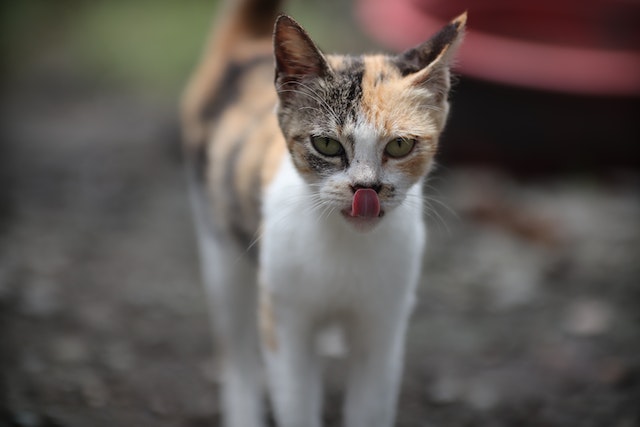Having many kittens in a cat litter is not a good idea because it increases the risk of the kittens developing diseases. This is because there are many parasites that are spread to the kittens while they are in utero and during their nursing. To avoid this you should spay the female cat. In this article we will discuss about the most important question “How Many Kittens Can a Cat Have ?”.
Also Read: can dogs have tomatoes
Fetal membranes surround the fetus
During pregnancy, the fetus develops within the mother’s uterus and is enclosed by the fetal membrane. This membrane, which is a part of the uterus, is composed of chorion, amnion, and reticular layer. It is used to maintain the conditions necessary for fetal health. The fetal membranes surround the fetus from the moment of conception to the time of delivery.
The placenta in cats, like those of other mammals, has a membranous, endothelial-chorial barrier. This is composed of chorion and amnion, both of which are important components of the placenta. The amnion is the innermost layer, consisting of two layers of cells. The epithelium is thin and tough, but it does not have any vasculature. The chorion, which is derived from the cytotrophoblast, develops from uterine tissue and eventually fuses with the amnion to form the amniotic sac.
The endometrial epithelium, under the placenta, does not survive implantation. The chorioallantoic membrane is attached to the uterus and apposes to the vascularized, gland-rich uterus. The chorioallantois is an ovoid structure that surrounds each fetus in the abdominal region. The membrane is fully zonary. The chorioallantoic placenta is composed of chorioallantois, chorion, amnion, intrauterine septa, and fetal urachus.
The endothelial-chorial barrier is composed of endometrial epithelium, chorioallantoic membrane, chorion, amnion, fetal urachus, intrauterine septa, and chorionic vesicles. The chorioallantoic sac is part of the uterus and has almost complete contact with the endometrium over its entire surface. The endometrial epithelium is more hypertrophied than mid-pregnancy.
The feline placenta has large acellular material, including chondrocytes and giant cells. These characteristics are not found in most other placentas. Malassine’s study of feline placental giant cells showed that these cells decrease toward term. He also demonstrated that the giant cells bordered the paraplacenta.
The chorioallantoic structure is separated from the uterus by a thin membrane. The hemophagous organ is located near the trophoblast and is separated from the labyrinth by a thin membrane. The chorioallantoic and hemophagous membranes have a trophoblast and columnar trophoblast. The columnar trophoblast has dark nuclei.
Fetal membranes surround the fetus in cats from the moment of conception until the delivery. They ensure that the fetus is ready for delivery. The amnion is an important component of the placenta and forms the innermost layer of the fetal membrane.
Ultrasounds and palpation can be used to confirm pregnancy and estimate litter size
Veterinary veterinarians can confirm pregnancy and estimate litter size using ultrasounds and palpation. However, both of these methods are not very accurate. Some dogs carry their pregnancy more cranially than others. It can be difficult to palpate large females or females with nervous temperaments.
Ultrasounds and palpation are useful in the early stages of pregnancy for detecting a growing fetus. It can also help determine fetal viability and a baby’s location. A fetal heart rate of over 200 beats per minute is considered normal. However, a fetal heart rate below 150 beats per minute indicates fetal distress and may require veterinary intervention.
Palpation is a non-technical procedure that involves gently pressing on the uterus. Ideally, palpation is done with one hand. However, it is not always possible. Large dogs, females with nervous temperaments, or females with small litters may make palpation difficult.
The most accurate method for determining pregnancy and litter size is ultrasound. This is because ultrasound is the best way to detect fetal heartbeats and a baby’s position. It also can determine the size of the fetus and the amount of amniotic fluid around the fetus.
An abdominal ultrasound is another way to detect pregnancy and estimate litter size. This is the most accurate method when performed on females that are cooperative. It is also the most accurate method for determining pregnancy at 28-30 days after ovulation. It is not very accurate when performed on females that are too large to palpate or with fewer pups.
Abdominal palpation and ultrasound are more accurate when used on females that are cooperative. However, it is not the best method for determining pregnancy. It is not the best method to determine fetal viability or the number of pups in a litter. It is not the best method for producing keepsake videos.
Ultrasounds and palpation can be useful when used in conjunction with other tests. They are also safe to use when performed correctly. They are used to confirm pregnancy, determine fetal viability, estimate litter size, and study the placenta. If you decide to use an ultrasound to confirm pregnancy, talk to your provider to ensure that the exam will be safe for your pup.
Parasites can be spread to kittens in utero and during nursing
Keeping your cat away from cats that are infected with parasites is a good way to protect your cat from infections. However, cats can also be infected by external parasites that are acquired from the environment. If your cat has a parasite infestation, it’s important to know how to treat it.
Intestinal parasites can cause severe problems in pets. In some cases, they can cause death. In other cases, they can cause serious illness and weight loss.
Roundworms are one of the most common intestinal parasites in cats. These small white worms are usually about 3-6 inches long and swim freely within the intestine. They attach to the lining of the intestine and drain blood from the host. They are not harmful to adult cats, but they can cause serious problems in kittens.
Hookworms are the second most common type of intestinal parasite. They enter the host through the skin or the lining of the mouth and bite into the intestinal lining. They can cause severe intestinal bleeding and can cause internal damage. These parasites can also cause anemia and malnutrition.
Coccidia are small parasites that can infect both cats and dogs. They enter the host through the lining of the mouth or the fecal matter and destroy the intestinal lining. Coccidia can cause death and can lead to other health problems.
Feline leukemia virus (FeLV) is a common disease that affects cats. It can cause immunodeficiency and can lead to cancer. FeLV is transmitted by mutual grooming and through mother cat milk. It is also shed in nasal secretions and in urine.
Cats are the most common host for parasites. They can be infected by feeding on infected small animals, eating contaminated soil and water, and grooming. They also can be infected through the ingestion of fecal matter or by licking their paws. If you think your cat has a parasite infestation, you should consult your veterinarian for treatment.
Feline panleukopenia is a highly contagious disease that causes severe gastrointestinal signs. It is most commonly found in kittens. The disease can live for a year or more in the environment and is spread by ticks.
Spaying a cat to prevent her from becoming a breeding machine
Ideally, you should spay a cat before she goes into heat. If she does not go into heat, she will not be a breeding machine. However, some cats will go into heat even if they have not been spayed. This can lead to serious health issues, including obesity. Also, pregnancy can cause birth defects.
Spaying a cat is a procedure that is performed in a veterinarian’s office under general anesthesia. During the procedure, a veterinarian will remove the uterus and ovaries. Cats that are in heat will experience excessive urination and vocalization. They may also bleed spray urine. In some cases, an overnight stay may be necessary. In other cases, the cat goes home the same day. After the procedure, the cat will receive adequate pain medication.
Cats go into heat at about six months of age. During the heat cycle, cats will become vocal and aggressive. They will exhibit excessive urination, especially when they are not active. If the cat is kept indoors, she will also experience digestive problems due to lack of movement. Intact male cats are also more susceptible to contracting dangerous viruses. If a cat is not spayed before going into heat, she may not be able to nurse her offspring.
A cat’s reproductive cycle is fascinating. When a cat goes into heat, she will stay in the cycle for approximately six days. If she is not spayed, she may go into heat for longer than six days. She will continue to cycle until she becomes pregnant.






